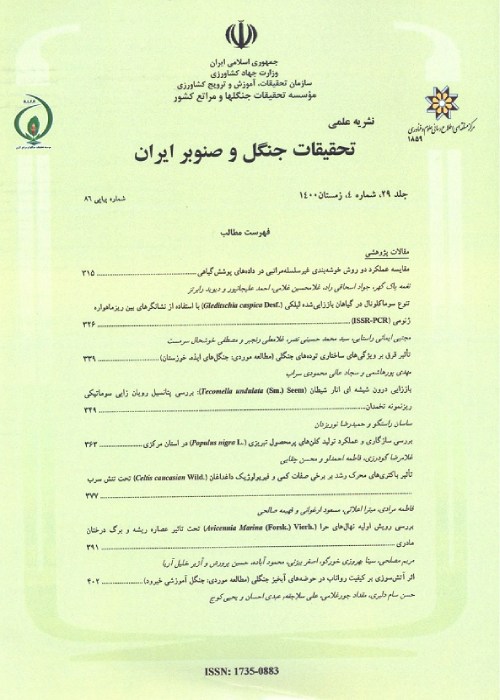Exhibiting the destruction of structural components in the areas of Persian oak (Quercus brantii) slash and burn agricultural areas in Zagros ecosystems (case study: Gilan-e Gharb forests)
Local communities' traditional and dependent livelihood results in many parts of the Zagros ecosystem being slash‐and‐burn agricultural areas. The current study examines the destructive processes of structural components in the slash and burn agriculture in Zagros forests. Quantitative and qualitative factors of all trees were recorded through one-by-one sampling. Quantitative data include species type, a vegetative form (coppice or standard method), diameter at breast height (DBH), tree height, large diameter and small diameter of a crown, tree health, and cut and destroyed roots proportion. Violations reports of natural resources were hired during 2001-2021 to calculate the number and volume of removed trees in three sites. Samplings were taken from the diameter at the breast height in the radial direction via an increment borer to detect differences in 2021 compared to 2001. Therefore, the diameter increase was calculated. The calculating results of the canopy area in 2021 and extracting it in 2001 in the Kasehkaran, Avalviar, and Cheshmeh Phan sites showed that the canopy area has decreased from 54686 to 43180, from 15830 to 12762, and from 22232 to 19064 m2, respectively. The distribution diagram of trees frequency in the diameter classes in studied times showed that the frequency of the number of trees in the three studied areas decreased in the second period compared to the first period. The total volume in 2001 was 153, 1174.5, and 565.6 m3, respectively, which in 2021 decreased to 144, 822, and 515 m3 in the Kasehkaran, respectively the Avalviar, and Cheshmeh Pahn. The removed trees in various ways in these areas include 118, 523, and 132, respectively, over 20 years. Comparing the means results using paired t-test with a probability of 99% showed that the difference between the means of volume factor in the two periods for Avalviar and Cheshmeh Pahn and the tree crown area is significant for the studied three habitats. Although the shifting agriculture extent may seem to have remained the same, its structural degradation has occurred over time. Therefore, these areas should be specifically protected by the appropriate agencies in addition to the regular protection measures.
slash , burn farming , canopy , Frequency , Density , volume , quality status
- حق عضویت دریافتی صرف حمایت از نشریات عضو و نگهداری، تکمیل و توسعه مگیران میشود.
- پرداخت حق اشتراک و دانلود مقالات اجازه بازنشر آن در سایر رسانههای چاپی و دیجیتال را به کاربر نمیدهد.


